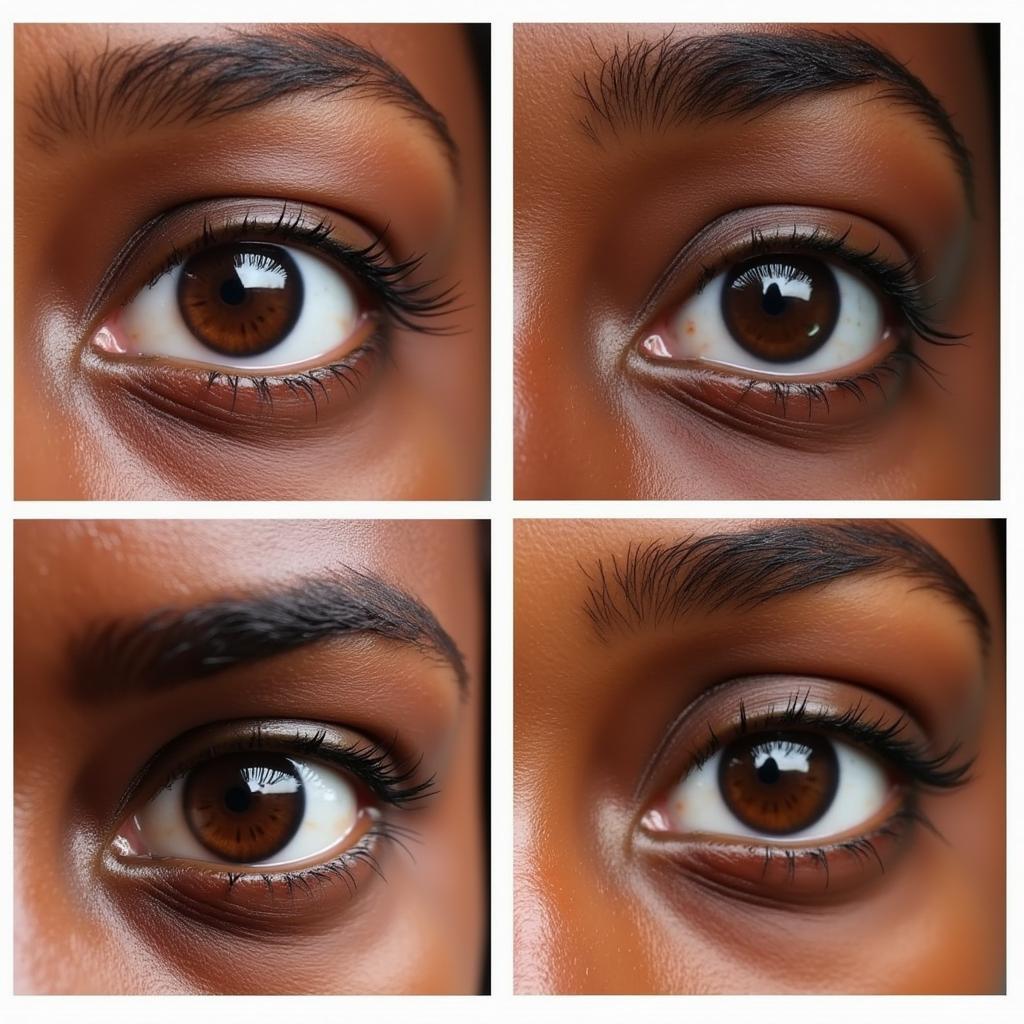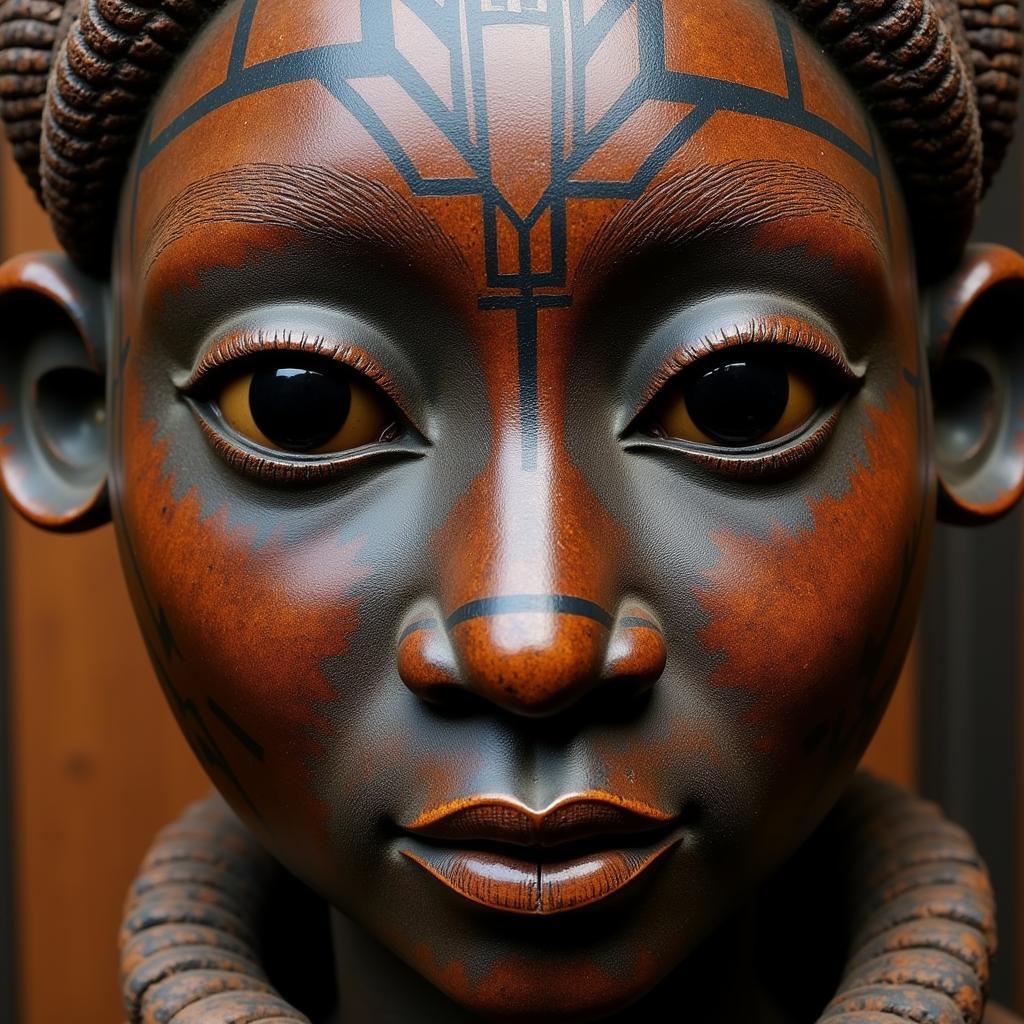Understanding the African American Sclera: Myths, Facts, and Cultural Significance
The African American Sclera, like all human sclera, is typically white. However, variations in the shade and appearance of the sclera can exist within any population group, including African Americans. This article aims to explore these variations, debunking myths and highlighting the facts about the African American sclera while also touching on its cultural significance.
Variations in Sclera Appearance
It’s important to understand that the sclera, the white part of the eye, isn’t always perfectly, uniformly white. Subtle variations in color and texture are common across all ethnicities. These variations can range from slight yellowing due to aging or underlying health conditions to bluish tints sometimes seen in younger individuals. In individuals with darker skin tones, including African Americans, the sclera might appear slightly darker or yellowish compared to those with lighter skin. This is often due to the presence of more melanin, the pigment responsible for skin and hair color, in the tissues surrounding the eye.
Debunking Myths about the African American Sclera
There are several misconceptions surrounding the African American sclera. One myth suggests that a darker or yellowish sclera indicates a specific health issue solely related to African Americans. This is inaccurate. While changes in sclera color can be a symptom of certain conditions, these conditions are not exclusive to any one ethnicity. Another myth claims that the sclera in African Americans is inherently different in structure or composition. This is also false. The basic anatomy and physiology of the sclera are the same across all human populations.
 Variations in African American Sclera Appearance
Variations in African American Sclera Appearance
The Role of Melanin
Melanin plays a crucial role in the appearance of the sclera, especially in individuals with darker skin. Higher melanin concentrations can create a subtle darkening or yellowish tinge in the surrounding tissues, influencing how the white of the eye appears. This doesn’t signify any inherent difference in the sclera itself but rather a difference in the surrounding pigmentation. Understanding the role of melanin helps dispel misconceptions about racial differences in sclera structure.
Is Yellowing of the Sclera Always a Cause for Concern?
Not necessarily. While yellowing can be a sign of jaundice, a condition related to liver function, mild yellowing can also be a natural consequence of aging or increased melanin deposition. If you notice significant changes in sclera color, it’s essential to consult a medical professional for a proper diagnosis.
Cultural Significance of the Eyes
Across many African cultures, the eyes hold significant cultural meaning. They are often seen as windows to the soul, reflecting a person’s inner being. Certain traditions and beliefs associate eye color and shape with specific personality traits or spiritual attributes. While these cultural interpretations vary widely across the continent, they underscore the importance placed on the eyes as a means of communication and understanding.
 Cultural Significance of Eyes in African Traditions
Cultural Significance of Eyes in African Traditions
Medical Conditions Affecting Sclera Appearance
Several medical conditions can affect the appearance of the sclera, regardless of ethnicity. These include jaundice, anemia, and certain inflammatory diseases. A change in sclera color can be an important indicator of underlying health issues and warrants medical attention.
When to Seek Medical Advice
If you notice any sudden or dramatic changes in the color of your sclera, such as yellowing, redness, or darkening, consult an eye doctor or healthcare professional immediately. These changes could indicate a medical condition requiring treatment.
Conclusion
The African American sclera, like any other sclera, exhibits natural variations in appearance. Understanding these variations and debunking associated myths is crucial for promoting accurate health information and appreciating the diversity of human physiology. While the sclera itself is fundamentally the same across all populations, subtle differences in pigmentation and surrounding tissues can influence its appearance. Remember, any significant changes in sclera color should be evaluated by a healthcare professional.
FAQ
-
What is the normal color of the sclera?
The sclera is typically white. -
Why might the sclera appear yellowish?
Yellowing can be due to aging, increased melanin, or underlying health conditions like jaundice. -
Are there any specific sclera conditions affecting only African Americans?
No, sclera conditions are not specific to any one ethnicity. -
What should I do if I notice a change in my sclera color?
Consult a doctor or eye specialist immediately. -
Does melanin affect sclera appearance?
Yes, higher melanin concentrations can create a darker or yellowish tinge in the surrounding tissues, influencing how the white of the eye appears. -
Are there cultural beliefs associated with the eyes in Africa?
Yes, many African cultures attribute significant cultural and spiritual meaning to the eyes. -
Is a slightly yellowish sclera always a sign of illness?
Not necessarily, mild yellowing can be a natural variation, but significant changes should be checked by a doctor.
You might also be interested in these other articles on our website: “Eye Health and Nutrition” and “Understanding Common Eye Conditions.”
Need assistance? Contact us 24/7 at Phone Number: +255768904061, Email: [email protected] or visit our office at Mbarali DC Mawindi, Kangaga, Tanzania. Our dedicated customer service team is always ready to help.